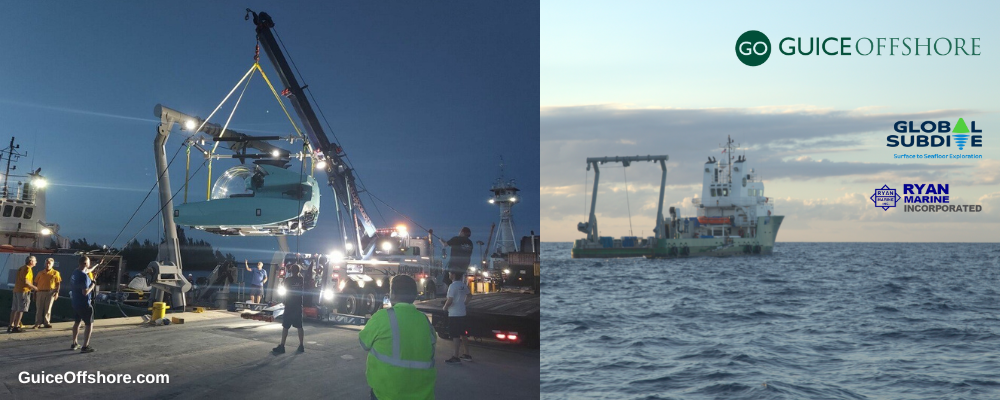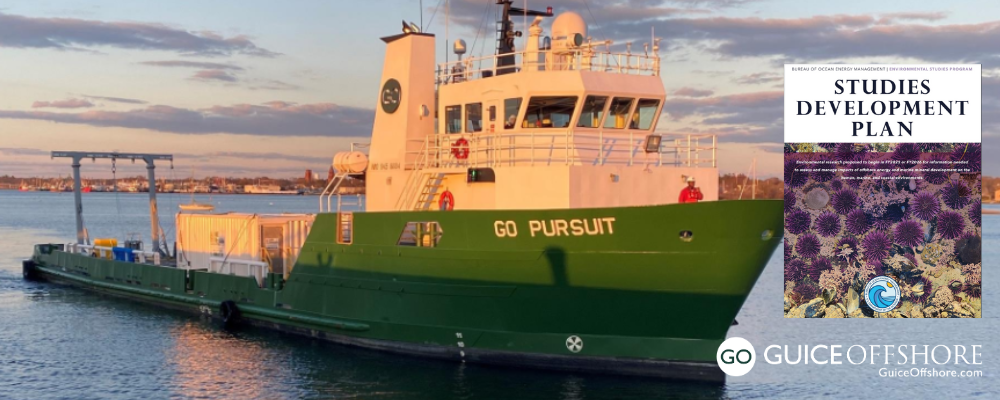With dramatic technology advancements in subsea robotics, materials and guidance systems—the key components of underwater and submersible vehicles—mankind’s ability to explore deep water has greatly expanded in recent years.
On average, the ocean’s depth is over two miles, with most of that space shrouded in extreme cold, darkness and crushing pressure. Venturing into tough conditions like these requires absolute confidence that your selected equipment is impeccably maintained, and that your accompanying crew is highly trained and committed to absolute excellence in performance and safety at all times.
So when it comes time to actually charter a vessel and coordinate underwater exploration equipment, how do you make the right choices for your unique mission?
Many of our Guice Offshore (GO) vessels already have attached A-frames and winches for loading and unloading underwater exploration vehicles, or they can be specially outfitted with heavy equipment that has been pre-tested for safety and suitability according to your job specifications.
No matter where you need us along the coastal United States, Gulf of Mexico, Caribbean, Central America or South America, Guice Offshore works together with our professional partners at Global SubDive and Ryan Marine to ensure you are outfitted with a vessel and crew who can perform your required tasks, carry your submersible or underwater vehicle, and comfortably house your crew members for the time period you need.
Among the types of offshore missions with which Guice Offshore often assists underwater are research, deployment and recovery, dive tending, crew movement and logistics, towing and salvage, construction support, and site and project management. We’re also experienced in supporting detailed underwater survey activities, such as seabed mapping, soil investigations and core sampling.
Guice Offshore vessels and submersibles have even helped to film underwater feature movies, television shows and documentaries!
Particularly for the oil and gas industry, GO vessels facilitate the inspection, maintenance and/or repair (IMR) of oil pipelines, subsea structures, floating and fixed platforms, and drilling rigs in a range of water depths. Guice Offshore IMR support activities extend well beyond traditional oil and gas roles, to include numerous industries such as offshore wind energy, which is currently focusing on the infrastructure installation of wind turbines, power cables, subsea or surface commissioning of structures and other sustainable energy equipment.
Often, IMR activities are conducted with Remotely Operated Vehicles (“ROVs”). Our hard-working, versatile GO fleet has the versatile accommodations, dynamic positioning station-keeping ability and removable side cargo rails necessary to support these operations.
While the array of underwater exploration equipment is vast, the National Oceanic and Atmospheric Administration’s Ocean Exploration Division describes each of the major types of vehicles generally in use below (all of which are available for charter through Guice Offshore):
Human-occupied vehicles (HOVs) can transport a person or small teams of people directly to the seafloor for a limited amount of time. Similar to the other submersibles, HOVs are equipped with tools such as lights, cameras, sensors, manipulator arms, and collection instruments. However, HOVs are unique in their ability to bring the operator’s own eyes deep underwater to explore, observe, collect samples and conduct research first-hand. (Note that the term submersible is often used to differentiate from other underwater vessels known as submarines, in that a submarine is a fully autonomous craft, capable of renewing its own power and breathing air, whereas a submersible is usually supported by a surface vessel, platform, shore team or sometimes a larger submarine.)
Remotely operated vehicles (ROVs) are tethered underwater robots used for research, exploration, and imagery collection in a water column and on the sea floor. ROVs are tethered to a ship, allowing control signals to be sent and received directly between topside operators and the subsea vehicle. Many ROVs can also collect underwater samples via a manipulator arm operated by a pilot.
Autonomous underwater vehicles (AUVs) are pre-programmed robots that can drift, dive, or glide through the ocean without real-time control by human operators. AUVs collect high-resolution sensor data, which provides detailed information for researchers. Once deployed, AUVs operate on their own, guided by a pre-planned route, which permits scientists to conduct other research while the AUV is surveying the surface or deep ocean.
If your offshore job requires manned or unmanned underwater vehicles and equipment, contact David Scheyd at Guice Offshore to discuss your needs in detail at (985) 273-2769 or David.Scheyd@guiceoffshore.com.



